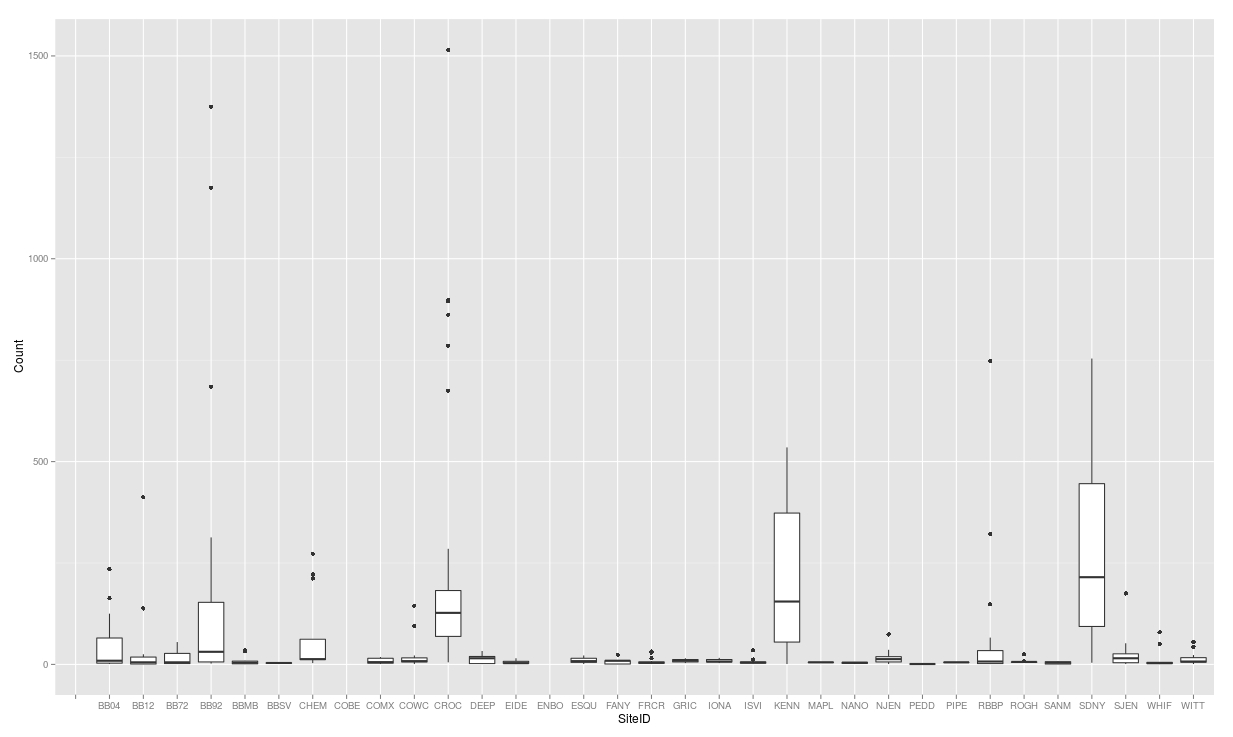On the importance of zeros
Without accurate assessment of absence sites data comparisons can be inaccurate.
One of the primary goals for the surveys is to understand why do sandpipers choose a particular location to rest and eat? We have chosen a set of sites that vary in size, shape and location. We hope that there is enough variation in site types to allow us to look at the features of a site that make it hospitable to a travelling sandpiper. If we only choose sites where we know sandpipers go, such a survey would not tell us why they avoid other sites. With a mix of sites used and unused, we are more likely to find a pattern.
2014 Results without zeros
If we have a look at the 2014 survey results we see that, most sites see zero or very few birds in a particular survey.

If we exclude the zeros from the data set, we get a very different results:

While it can be frustrating to spend a day birding and not see any birds, the survey sites are chosen so as to be potential sites for sandpiper usage. Your zeros are just as important to the results as the sites with hundreds or thousands of birds.
If you find yourself at a site with few or zero birds, there are a few things you can do that will help with the project.
1. Keep a lookout for those solo birds or small flocks.
Even at sites that are rarely used, sometimes have birds stopover for a few minutes at the right tidal height. Keep your eyes trained between survey times to spot the birds arrive from nearby sites.
2. Falcons can be hard to spot, but if they are there any birds will know it.
Falcons may glide silently by or can sit in treetops motionless until a prey arrives. Watch the behaviour of any other species of birds at the site. They may give you a signal of a predator's arrival.
3. Think of alternate explanations for sandpiper absence.
Our project is examining broad scale patterns in site usage based on site characteristics, but we often don't know the details of each individual site. If you have any information or hypotheses about your site, let us know in the comments.
4. Follow the extra protocols carefully.
While the main focus of the shorebird surveys is to count western sandpipers, the other protocols are important to our understanding of sandpiper decisions as they migrate through each year.
